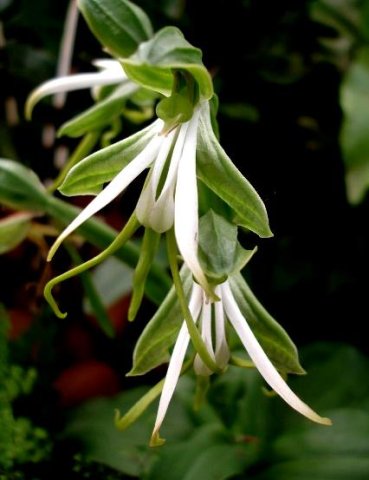Bonatea speciosa flowers

Author: Ivan Lätti
Photographer: Judd Kirkel Welwitch
The green and white flowers of Bonatea speciosa are produced in profusion on the dense, erect spike of up to 1 m. Each flower has a green, ovate bract subtending the ovary and reaching its top. The ovary, also green, is 4 cm long, angled up from the stem, the connection of the flower to the stem. A flower becomes up to 5,5 cm long. The green dorsal sepal is helmet-shaped or hooded and ribbed over the rest of the flower, ending in an acutely pointed tip. The green lateral sepals are recurved, oblong to lanceolate, angled down behind the petals.
The petals are narrow and bifurcated, their green, upper lobes up with the dorsal, the white lower lobes are linear, positioned forward and angled outwards, their narrow tips sickle-shaped. The green lip below is three-lobed, the lobes long. The lateral lip lobes angle out below the flower centre, curving at their tips. The central lip lobe is bent near halfway along its length. There is a cylindrical spur with a club-shaped tip attached to the lip base.
The anther is small compared to the stigma. A hood-like rostellum separating the two is in the centre with two projecting arms.
Bloomtime is almost all the year round, although the plant is called Oktoberlelie (October lily) in Afrikaans. The flowers are pollinated by long-tongued hawk-moths (Liltved and Johnson, 2012; Manning, 2007; Bean and Johns, 2005; Pooley, 1998; iNaturalist).

